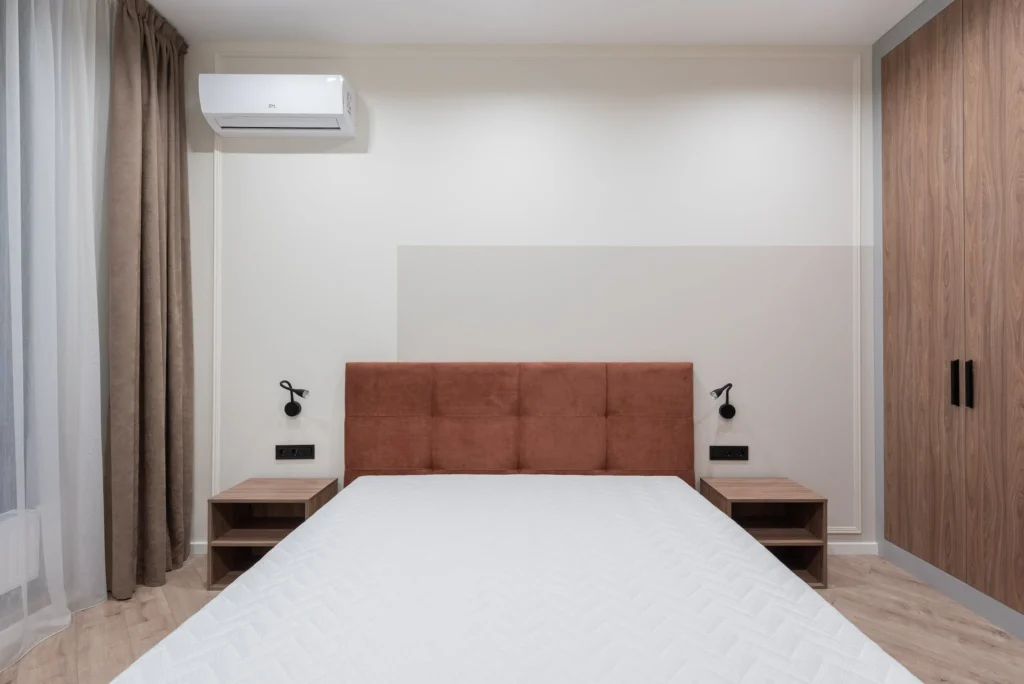Oh, how tempting it is to crank up the air conditioning during the hot summer days. After the summer we just had, no one should blame us for running our air conditioners 24×7 for some respite. But the worst part is the guilt trip when the energy bills come, isn’t it?
Did you know that almost 90% of American households have air conditioners these days? According to the US Department of Energy (DOE), those units are responsible for consuming 6% of the electricity produced in the United States each year, which amounts to approximately $29 billion annually.
The US Energy Information Administration (EIA) estimated that households in America had spent about $176 every month during June, July, and August of this year. A large chunk of it must have gone towards running the air conditioners non-stop to survive the heat. The worst part is that summers are likely to get hotter each year, which also means heftier energy bills in the future.
So if you are keen to save some dinero, I’m going to discuss a few tried and tested ways to save the costs of running air-conditioners during the summer months.
Go for an Energy Audit
If you don’t have a brand-new house, chances are that the expensive cool air coming out of your AC is seeping out through multiple places. An energy audit can help you understand how well your house is holding the cold air in and what areas can be improved to make your home more energy efficient.
Energy audits can be divided into three categories. Commercial buildings usually undertake the most expensive and comprehensive ones. Homeowners can either go for level one or the more in-depth level two audit.
Level one is more like a preliminary walk-through, where a professional auditor will inspect your house for areas that can be repaired to prevent everyday energy loss. Level two includes more comprehensive air leak testing, an overview of your air conditioning unit, a review of your home insulation, and other inspections depending on the climatic conditions of your area.
A level one energy audit will cost you between $100 and $150. On the other hand, the cost of a level two audit depends on the location, house size, and the necessary tests and can range between $300-$600.
A professional home energy audit is the best way to understand if your house is losing energy and how to prevent it. However, if you are not too keen on adding to your expenses, you can conduct a level-one inspection on your own. It may not be as effective as a professional one, but it can help you identify some of the areas that need your attention.
First, make a list of the obvious areas for air leaks inside the house, such as baseboard gaps, floor edges, windows, doors, and the joints of walls and ceiling. Some other places to check for air drafts are lighting and plumbing fixtures, switches, electrical outlets, and fireplace dampers. You should also check where different building materials meet outside of your house. If you find any leaks, you can simply plug and caulk them to prevent energy loss from your house.

If you use natural gas for cooking, make sure that you have enough ventilation for the hot air to escape. You need approximately one square inch of ventilation for every 1000 Btu used by your appliance. If you notice any burn marks or soot around the burners or on the vent collar, your ventilation is probably not adequate. You should also inspect your home’s insulation, especially if you live in an old house.
You should have your air conditioning unit inspected and maintained regularly. If the unit is too old, you should consider replacing it with one of the new energy-efficient models. According to Heald Mechanicals, a company that offers air conditioning repair in Sacramento, California, some of the tell-tale signs to replace an air-conditioning unit include:
- Excessive noise
- Inefficient cooling
- Unwanted smells from the unit
- Water pooling around the base
- Increase in humidity levels in the house
- Energy bill spikes
You should also inspect your ductwork, especially near the seams, and look for dirt streaks indicating air leaks. If you notice the signs, seal them properly with a duct mastic. Make sure that the installation you use on the ductwork has an R-value of 6 or higher.
Don’t Run Your AC 24×7
Running your air conditioner 24 hours a day may seem like a good idea to keep your house cool when it’s sweltering hot outside. Like many others, I also believe that an air conditioning unit might use less energy if the air inside the house is already cool.
However, Aisling Pigott, a graduate student at the University of Colorado, Boulder, says differently. Pigott and other researchers studied three types of air conditioners and their cooling efficiencies. They noticed that the air-conditioners consumed less energy when switched off for eight hours instead of the systems maintaining 76°F all day.
Even though the researchers found a temporary energy spike when the air conditioner tried to recover from a higher indoor temperature, the overall energy consumption was still less than if they ran for 24 hours. According to the research, which was not peer-reviewed, switching off the air conditioner for eight hours can save up to 11% of energy costs.
However, the team notes that the real figures can vary depending on the circumstances, such as home insulation and climatic conditions. Also, switching off the air conditioner may not be a viable solution if you don’t leave your house the entire day or you have pets at home.
Use a Smart Thermostat
If you are still using one of those old thermostats, it’s time to get rid of it. Smart thermostats cost about $300 and can be operated remotely from your smartphone. You can set your programmable thermostat as high as you feel comfortable when you’re at home and switch off your AC while you’re away. The DoE estimates that you can save up to 10% of your energy bill if you set your programmable thermostat at 78°F when you are at home and about 7 to 10° higher for eight hours a day when you’re away.
You can turn on your air conditioner while you’re on your way back. But don’t set the temperature super low when you do so because it won’t cool your house any faster and can increase energy consumption dramatically. Make sure that you install the smart thermostat away from direct sunlight, windows, doors, and skylights.
The DoE recommends another trick. Set the air conditioner fan on a low speed on a humid day. Why, you ask? The slower fan speed will help remove more moisture from the air inside your house, thus significantly improving your comfort level.

Cover Your Windows
Did you know that almost 30% of your air conditioner’s cooling energy can be lost due to windows? According to the DOE, almost 76% of the sunlight that enters your house in summer through your windows adds to the indoor temperature. Solar screens or mesh-like window screens can be particularly effective to block all that heat, especially on east and west-facing windows.
If you are considering installing such a screen, make sure you install them on the outside. That way, the solar energy would be stopped before it enters through the glass, making the screens more effective. You can also use white or silver window films to reduce the amount of heat coming in through your windows. Window screens have an added advantage because they can keep out the sun’s heat even when the windows are open.
Window treatments are also effective; curtains or blinds can also keep your house cooler and reduce the energy bill generated by your air conditioner. But if you want maximum efficiency, consider installing solar window shades. These shades are coated with a material that can stop most of the UV rays coming in through your windows, reducing your electricity bill and keeping your furniture from fading.
I hope these recommendations help you save some of the money spent on air conditioning. If you have any such tricks under your sleeve, please let us know, and we’ll be happy to include them.






